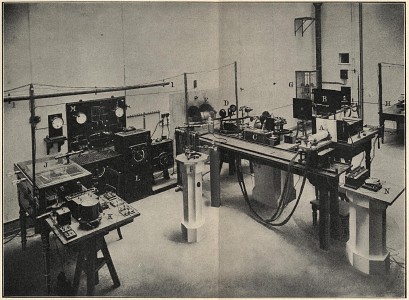Around 1900, the wave theory of light seems unshakable. But the radiation of a black body and the photoelectric effect are difficult to explain on its basis. A heated black body emitts light.
At the Physikalisch-Technische Reichsanstalt in Berlin its color spectrum is measured with precision. It is, however, not easy to bring the results into accordance with classical physics – a borderline problem between electrodynamics and thermodynamics.
If one irradiates a metal surface with light, it becomes positively charged by the emission of electrons. It turns out that the energy of the electrons does not depend on the light intensity but, inexplicably, on its color.
 Scene
Scene


 1st Slide
1st Slide
 Branching Point
Branching Point
 Module: Herausforderungen im Labor: Grenzprobleme - Labor
Module: Herausforderungen im Labor: Grenzprobleme - Labor Sequence: 0.0._START_20610_einstieg_grenzprobleme
Sequence: 0.0._START_20610_einstieg_grenzprobleme Branching Point: Borderline Problems of Classical Physics
Branching Point: Borderline Problems of Classical Physics Slide: Ludwig Boltzmann: Lectures on the Principles of Mechanics
Slide: Ludwig Boltzmann: Lectures on the Principles of Mechanics 

